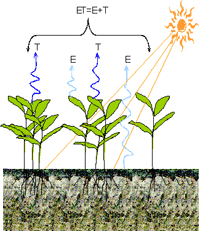Agricultural Research Division of IANR

West Central Research and Extension Center, North Platte
Date of this Version
2020
Citation
Transl. Anim. Sci. 2020.4:1-11
doi: 10.1093/tas/txaa194
Abstract
Optimizing beef production system efficiency requires an understanding of genetic potential suitable for a given production environment. Therefore, the objective of this retrospective analysis was to determine the influence of cow body weight (BW) adjusted to a common body condition score (BCS) of 5 at weaning-influenced cow-calf performance and postweaning steer and heifer progeny performance. Data were collected at the Gudmundsen Sandhills Laboratory, Whitman, NE, on crossbred, mature cows (n = 1,607) from 2005 to 2017. Cow BCS at calving, prebreeding, and weaning were positively associated (P < 0.01) with greater cow BW. Increasing cow BW was positively associated (P < 0.01) with the percentage of cows that conceived during a 45-d breeding season. For every additional 100-kg increase in cow BW, calf BW increased (P < 0.01) at birth by 2.70 kg and adjusted 205-d weaning BW by 14.76 kg. Calf preweaning average daily gain (ADG) increased (P < 0.01) 0.06 kg/d for every additional 100-kg increase in cow BW. Heifer progeny BW increased (P < 0.01) postweaning with every additional 100-kg increase in dam BW. Dam BW did not influence (P ≥ 0.11) heifer puberty status prior to breeding, overall pregnancy rates, or the percentage of heifers calving in the first 21 d of the calving season. Steer initial feedlot BW increased by 7.20 kg, reimplant BW increased by 10.47 kg, and final BW increased by 10.29 kg (P ≤ 0.01) for every additional 100-kg increase in dam BW. However, steer feedlot ADG was not influenced (P > 0.67) by dam BW. Hot carcass weights of steers were increased (P = 0.01) by 6.48 kg with every additional 100-kg increase in cow BW. In a hypothetical model using the regression coefficients from this study, regardless of pricing method, cow-calf producers maximize the highest amount of profit by selecting smaller cows. Overall, larger-sized cows within this herd and production system of the current study had increased reproductive performance and offspring BW; however, total production output and economic returns would be potentially greater when utilizing smaller-sized cows.
Included in
Agriculture Commons, Beef Science Commons, Ecology and Evolutionary Biology Commons, Plant Sciences Commons


Comments
© The Author(s) 2020. Published by Oxford University Press on behalf of the American Society of Animal Science. This is an Open Access article distributed under the terms of the Creative Commons Attribution Non-Commercial License